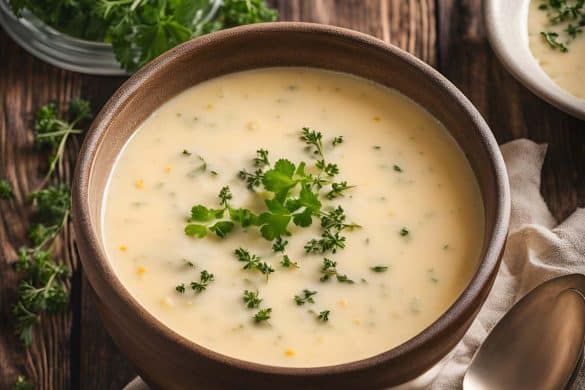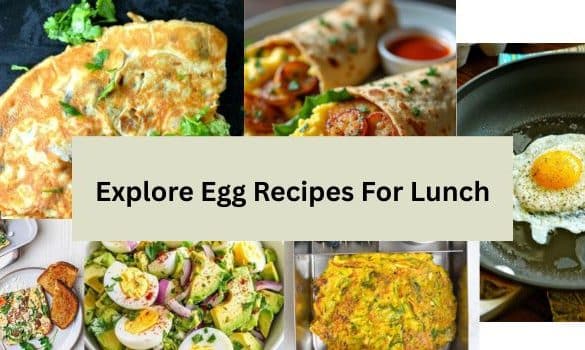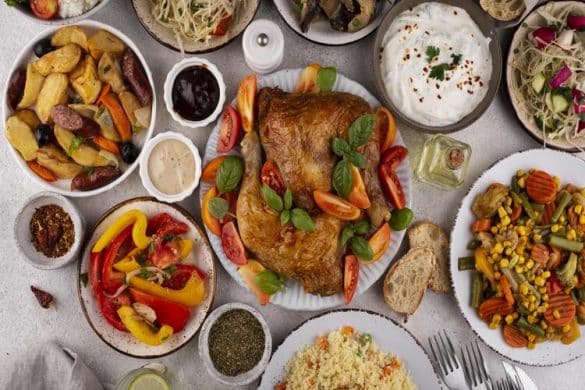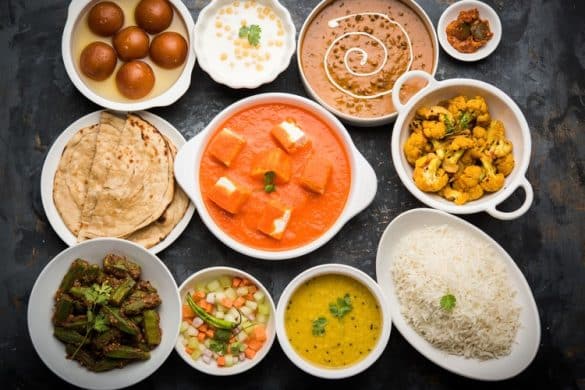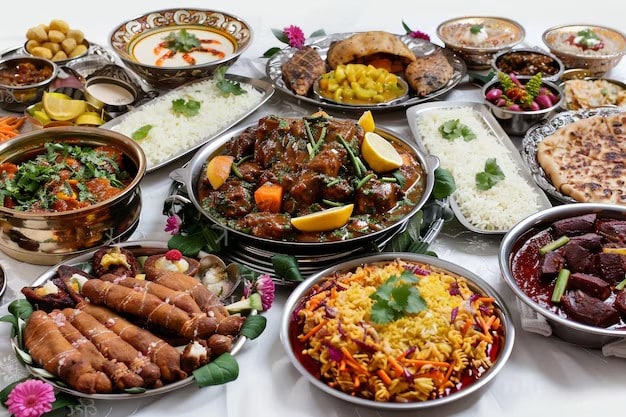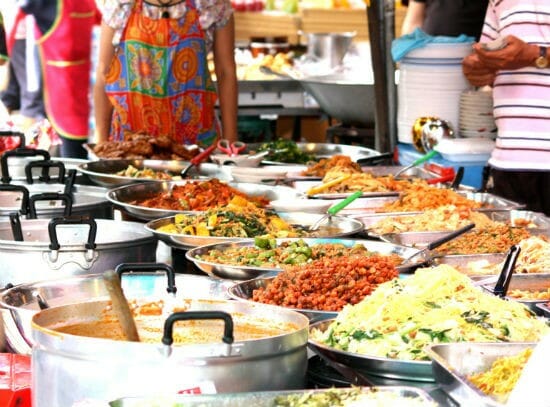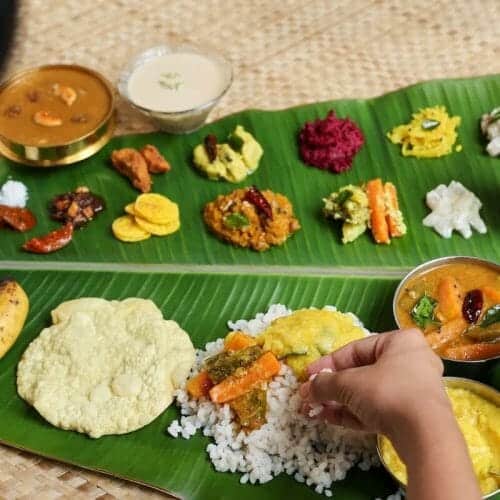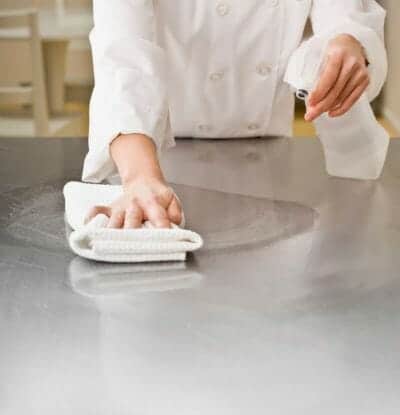Anyone who loves cooking knows that the kitchen can easily become one of the messiest places in the house. From splatters of sauces, crumbs from the toaster, and residue from cooking fumes to the stains on the cooking appliances, there is always something that needs cleaning.
A clean kitchen is not just pleasant to look at; it also ensures the food you prepare is hygienic. However, tackling every corner of your kitchen regularly might feel overwhelming, hence the need for effective and efficient home cleaning tips and kitchen cleaning tips. Whether you are an avid cook or someone who uses the kitchen sparingly, these useful tips will come in handy to help maintain a tidy, hygienic, and organised kitchen.
These tips are designed to be easy and effective and to help you optimise the time spent on cleaning. So roll up your sleeves and get ready for some serious spring cleaning action! It’s time to make your kitchen sparkle.
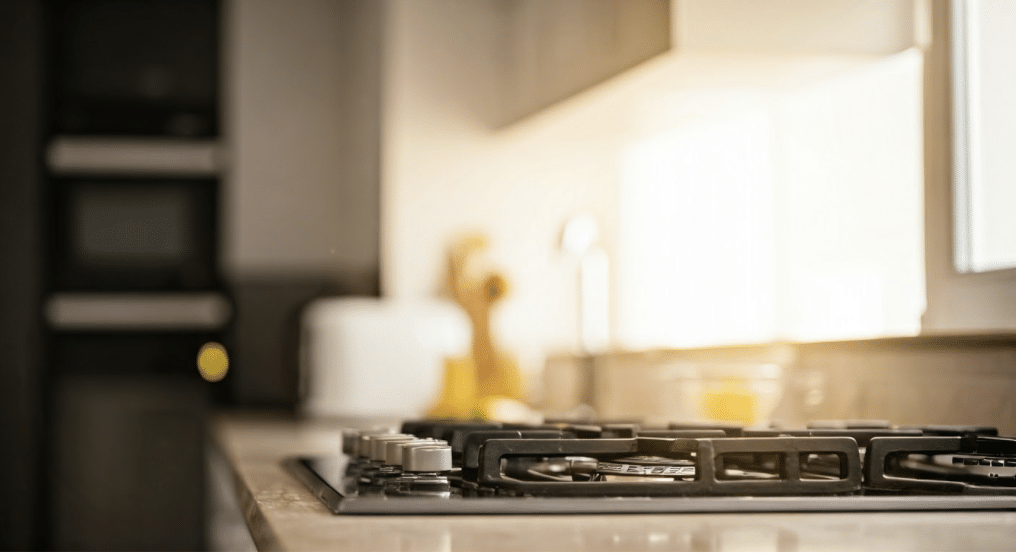
Sparkling clean kitchen
Get Organised Before Cleaning
Before beginning your kitchen cleaning journey, it’s vital to get organised. Start by decluttering your kitchen area – remove any items that don’t belong there and ensure everything is in its proper place.
This preliminary step will make the cleaning process much smoother and more manageable. Also, gather all the cleaning supplies you’ll need for the task. This includes products like all-purpose cleaners, baking soda, white vinegar, dish soap, microfibre clothes, paper towels, spray bottles, and vacuum cleaners, among other materials specified in your cleaning checklist.
Also read: How to keep your cooking space spic and span
Create a Cleaning Checklist
Having a checklist is important in ensuring that every area of your kitchen gets the attention it requires. Below are essential areas that should be on your kitchen cleaning checklist:
- Cabinets and Drawers: Empty them out, clean the insides and organise your utensils and supplies before putting them back.
- Countertops and Surfaces: These are usually the most cluttered areas. Clean and organise them regularly.
- Appliances: This includes cleaning out the fridge, microwave, dishwasher, and oven, among others.
- Kitchen Sink: It needs a thorough clean-up, including the garbage disposal unit.
- Kitchen Floor: Sweep, mop and treat tough stains as they appear to maintain your floor’s cleanliness and shine.
Prepare Effective Cleaning Supplies
It’s worth noting that different areas of your kitchen may require different cleaning supplies. Here’s a guide to the primary cleaning products you’ll need for your kitchen:
| Cleaning Item | Use |
| All-purpose cleaner | Great for countertops, stovetops, and sinks. |
| Baking soda | Perfect for scrubbing off tough grease and grime. |
| White Vinegar | Excellent for deodorising sinks and appliances. |
| Dish Soap | Ideal for cleaning dishes and some appliances. |
| Microfibre cloths | Ideal for dusting and wiping down surfaces. |
| Paper Towels | Useful for cleaning up spills. |
| Spray bottle | Used to hold homemade cleaners. |
| Vacuum cleaner | Handy to get rid of crumbs and dust on the floor |
Clean and Organise Your Countertops
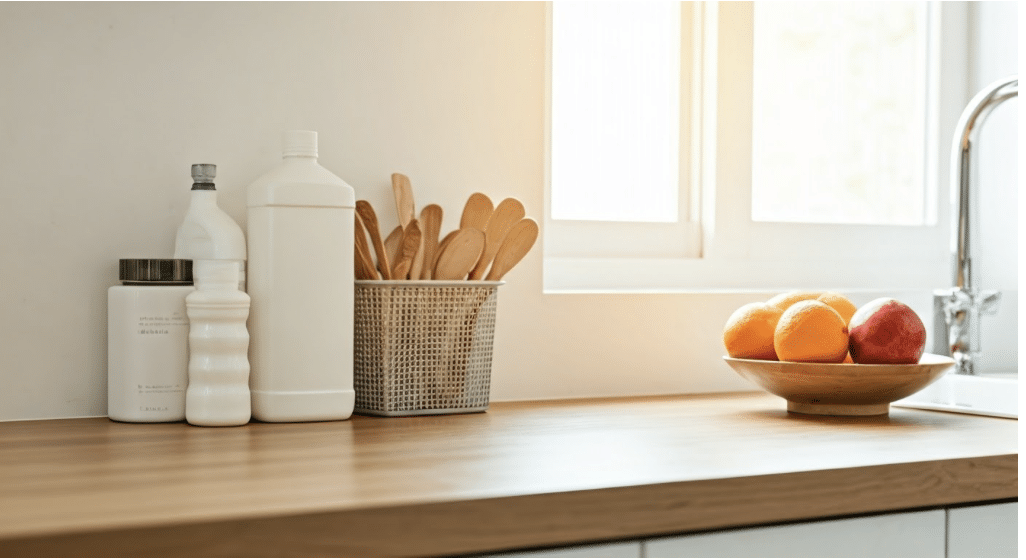
Organised kitchen countertop
Keeping your natural stone countertops clean and clutter-free is key for a well-functioning kitchen. Begin by removing everything from the surface and wiping it down with a microfiber cloth and an appropriate cleaning solution, whether store-bought or homemade.
Then, put back only what’s necessary – the fewer the items, the cleaner and more spacious your countertop will seem. Regular maintenance will not only help to preserve the quality of your natural stone countertop material but also make cooking and meal preparation more enjoyable.
Clutter-Free Countertops
To maintain clutter-free countertops, consider using organisational tools like stands for utensils, vertical plate holders for dishes, or clear containers for spices. These tools can effectively free up counter space and add to the neatness of your kitchen. Also, make it a habit to return items back to their designated spots after using them.
To assist in this process, you might employ the laundry basket method to avoid clutter buildup. Avoid piling up dirty dishes on the countertop; instead, rinse them off and place them in the dishwasher immediately after use. This practice contributes to a clean and clutter-free countertop that enhances the overall aesthetics of your kitchen.
Wiping Down Surfaces Daily
Daily maintenance goes a long way in keeping your kitchen clean and tidy. Make it a daily routine to wipe down your countertops and other major surfaces in the kitchen, including the tops of your cabinets. Use a spray bottle with a suitable cleaning solution (like a mix of water and white vinegar) and a microfibre cloth.
Pay extra attention to areas that accumulate grime and sticky residues, including stovetops, microwave, and refrigerator handles. This simple everyday habit can significantly reduce the need for deep cleaning, leaving your kitchen always fresh and clean.
Also read: 10 must-have traditional Indian utensils for every kitchen.
Tips and Tricks for Sparkling Appliances
Your kitchen appliances need regular attention to keep them functioning correctly and looking their best. Over time, grime, food residue, and fingerprints can build up on their surfaces, interfering with their efficiency and spoiling their look.
Employing certain everyday items like baking soda, vinegar, and a cup of lemon juice can help keep your appliances gleaming and performing optimally. Let’s explore some useful tips and tricks for maintaining the sparkle of your key kitchen appliances.
Oven Cleaning Techniques
A clean oven provides a more hygienic cooking experience and also improves its performance. Here are some steps that will help you keep your oven sparkling clean:
- Baking Soda Scrub: Make a paste using baking soda and water. Apply this mixture inside the oven, avoiding the heating elements. Leave it on overnight, and then wipe it clean with a damp cloth.
- Vinegar Spray: Following the baking soda cleaning, spray a little vinegar inside your oven. The vinegar will react with the baking soda and produce foam. Wipe down afterwards with a clean cloth.
- Cleaning Oven Racks: Remove the racks and soak them in dish soap mixed with warm water. Scrub off any stubborn grime and rinse thoroughly before putting them back into the oven.
Maintaining a Clean Microwave
A clean microwave enhances the efficiency of your heating processes and eliminates lingering food odours. Begin by removing the turntable and washing it with dish soap and hot water. For the microwave interior, create a cleaning solution by adding a cup of water and a tablespoon of vinegar to a microwave-safe bowl, then microwave on high power for five minutes.
The steam produced loosens grime and food splatters, making it easy to wipe with a damp cloth and clean water. For any stubborn stains, a paste made from baking soda and water can be applied, left for a few minutes, then scrubbed off.
Grab Plenty Of Dishtowels
Having plenty of fresh dishtowels on hand is an underrated kitchen cleaning tip. Using clean towels reduces the spread of bacteria and eliminates the possibility of cross-contamination, including issues related to pet hair. Additionally, they can be used for different purposes, such as drying dishes, wiping down countertops, holding hot handles, or even as oven mitts in a pinch.
Ensure that you change out your towels frequently and wash them regularly. It’s advisable to wash them in hot water and air-dry or tumble-dry on low heat to maintain their absorbency and longevity.
Dealing with Kitchen Grease and Grime
Kitchen grease and grime build up quickly, especially around the stovetop area. To remove general grease residue, use a solution of equal parts white vinegar and warm, soapy water, along with a few drops of dish soap. For stubborn grease stains, apply a mixture of baking soda and dish soap, let it sit for 15 minutes, then scrub gently and rinse.
In case of greasy film on appliances and cabinets, apply a small amount of vegetable oil to a cloth or paper towel and wipe the surface. Remember, regular cleaning after cooking sessions significantly minimises grease accumulation, making your cleaning task much easier.
Cabinets and Drawers Cleanup
Cabinets and drawers often house a multitude of items, from dishes, pots, and pans to cutlery and spice jars. Over time, they tend to accumulate crumbs, dust, and occasional spills. It’s crucial to periodically empty them out, clean the insides, including pantry shelves, and reorganise your items.
Regular maintenance will not only keep your storage areas clean but also contribute to the overall cleanliness of the kitchen. Plus, organised cabinets and drawers make cooking and meal prep more enjoyable and efficient.
Deep Cleaning Kitchen Cabinets
Kitchen cabinets require a thorough cleaning to maintain their appearance and functionality. Here are some steps:
- Empty Cabinets: First, empty your cabinets completely. This gives you full access to the interiors and allows you to sort through the items.
- Cleaning Solution: Create a cleaning solution using warm water and a few drops of dish soap. Use a soft sponge or cloth to clean the interiors, ensuring they reach into the corners.
- Grease Removal: For stubborn grease stains, a paste of baking soda and warm water can effectively lift off the grease.
- Dry and Organize: Lastly, ensure the cabinet is dry before placing your items back. Consider using shelf liners to protect the cabinet surfaces from potential spills and stains.
Organising Kitchen Drawers
Organising your kitchen drawers not only enhances the aesthetics of your kitchen but also improves its functionality. Here’s a simple guide to help you organise your kitchen drawers better:
| Steps | Actions |
| Empty Out Drawers | Remove all items and clean them with a dusting cloth. |
| Sort Items | Group similar items together for easy access. |
| Use Drawer Dividers | These help keep items separate and organised. |
| Label Sections | Stickers or labels enhance ease of navigation. |
| Regular Maintenance | Review and rearrange items regularly to maintain order. |
Implementing such organisational methods can save you considerable time and effort while preparing meals, and it also improves kitchen cleanliness.
The Perfect Kitchen Floor Maintenance

Cleaning the kitchen floor
Your kitchen floor often becomes a collection spot for crumbs, spills, and foot traffic grime. Regular sweeping or vacuuming can help control the buildup of dirt, but a routine of deep cleaning is essential for maintaining your floor’s cleanliness and shine.
Depending on your floor type, appropriate cleaners and methods should be used. Wood floors, for instance, necessitate specific care to avoid damaging their finish, while tile floors might call for a scrub brush to clean grout lines effectively.
Sweep, Mop and Maintain
Maintenance of your kitchen floor begins with daily cleaning, sweeping, or vacuuming to remove loose dirt and debris. Investing in a good quality broom or vacuum cleaner can significantly ease this task. After daily cleaning, mopping the floor with an appropriate cleaner will remove any residual grime.
For a natural cleaning solution, you can use a mix of vinegar and hot water. However, if your floors are wooden, stick to a wood-friendly cleaner. After mopping, ensure that the floor is dry thoroughly to prevent slips and falls. Regularly following these steps will prolong the durability of your kitchen floor and keep it looking fresh and clean.
If You Drop Something On The Floor, Pick It Up Right Away
It’s pretty common to spill food or drop crumbs on the kitchen floor while cooking or serving meals. While it might be tempting to leave the mess to handle later, immediate clean-up is the best approach. Leaving spills (especially wet or sticky ones) on the floor can attract pests and create stubborn stains.
Furthermore, using a baking sheet can help catch crumbs or dropped food before they hit the floor, which can get stepped on and spread around the kitchen. Therefore, whenever you happen to drop something on the floor, pick it up right away and clean the spot promptly to maintain the cleanliness of your kitchen.
Removing Tough Stains and Spills
At times, your kitchen floor may become victim to some tough stains or heavy-duty spills. For such situations, a simple sweep and mop aren’t enough. You may need to employ specific stain removal methods depending on your floor type.
For most floor types, a paste of baking soda and water can work wonders on stubborn stains. Allow the paste to sit on the stain for about 15 minutes, and then scrub away with a soft brush. For grease stains, a dish soap solution helps to break down the grease and lift the stain. Remember, always test any cleaning solution on a small, inconspicuous area of your floor first to avoid any potential discolouration or damage.
Conclusion
Keeping the kitchen—an integral part of any household and the heart of your home—clean not only enhances its functionality but also contributes to healthier and more enjoyable cooking experiences. From timely organisation and routine clean-ups to deep cleaning jobs and proper maintenance, every activity contributes significantly to this goal.
A well-maintained kitchen sets the ground for culinary exploration and also fosters a love for cooking. By adopting these simple yet effective kitchen cleaning tips, you can ensure cleanliness and tidiness around your kitchen. Remember, a clean and organised kitchen results in better meal prep, less stress, and, overall, a more joyful cooking experience. So, invest some time in caring for your kitchen—it’s worth every moment!
Frequently Asked Questions
How often should I deep clean my kitchen?
The frequency of deep cleaning typically depends on how much you use your kitchen. However, as a general rule, it’s best to deep clean your kitchen at least once a month. This involves a thorough cleaning of small appliances, scrubbing floors, and ensuring all corners are grime-free.
What are the best kitchen cleaning products to use?
The best kitchen cleaning products are those that effectively clean without harming your surfaces. A few essentials are baking soda, white vinegar, dish soap, a spray bottle, microfiber cloths, and a vacuum cleaner. For heavier-duty tasks, specialised cleaning products suited to your specific appliances and surfaces can be used.
How can I maintain a clean kitchen with a busy schedule?
Even with a busy schedule, maintaining a clean kitchen is possible through regular small actions, even when on a tight schedule. Promptly clean up after meals, wipe down surfaces daily, and organise items immediately after use. By spending a few minutes each day on these tasks, an overwhelming kitchen cleanup can be avoided.

